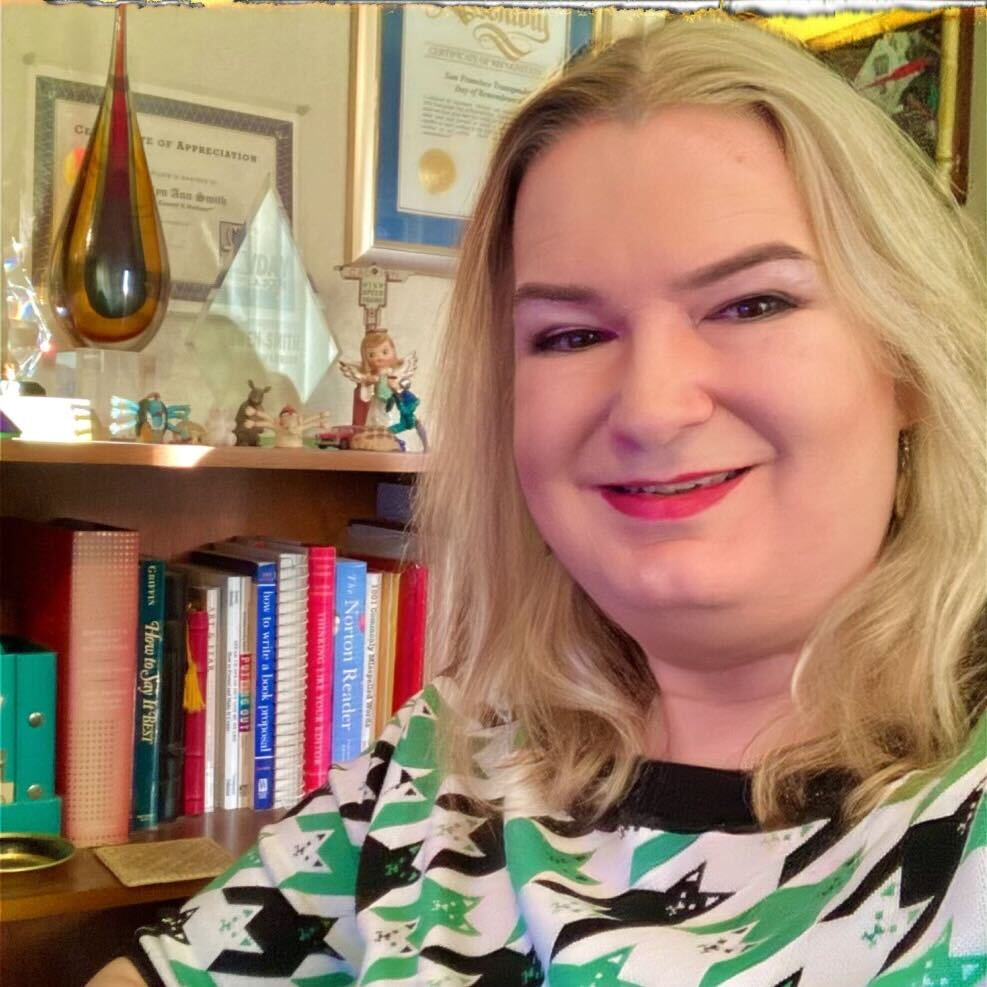There is almost no transgender person alive today whose life has not been impacted by Gwen Smith.
Twenty-six years ago, Smith made an audacious claim that led to a global movement: Transgender people should not be murdered because of who they are. That rallying cry, in the form of a website that chronicled anti-transgender murders, laid the foundation for Transgender Day of Remembrance, which now honors transgender homicide victims around the world annually.
Despite changing the course of LGBTQ+ history, Smith’s work to accurately reflect her own story remains unfinished. Nearly 30 years after starting her transition, Smith is still struggling to get accurate identification documents stating she is female.
She married her wife, Bon, in 1993. At the time, same-sex marriage wasn’t legal in her state of California, nor was it two years later when she transitioned, or in the years that followed. Marriage equality didn’t arrive in California until 2013.
So, Smith started with other documents. A drivers license, a birth certificate, school records.
“My elementary [school] sent me the most darling little diploma, as if I needed that,” Smith said recently with a laugh.
But the process of updating her documents took years, hundreds of hours — and dollars. She would fill out a form, only to learn that the criteria for updating the document had recently changed.
“They’re constantly updating the ways that these are done,” Smith said. “If you start a document and it’s for a couple of months, you’re going to have to start over because they’ve changed the form.”
Smith’s struggles to update her IDs are incredibly common among transgender Americans. The National Center for Transgender Equality, a national policy nonprofit, reports that as of 2022, 48 percent of trans people who had at least one form of identity document didn’t have a single one that accurately reflected their gender. Only 20 percent had the name they wanted on some of their IDs.
The Williams Institute at the UCLA School of Law reported in 2021 that antitrans state laws have instituted multiple barriers for transgender people seeking updated IDs, such as requirements for surgery. Recently, legislative and policy rules in some states have made that even harder.
In January, the Florida Department of Highway Safety and Motor Vehicles announced that transgender people were barred from changing their gender markers on their drivers licenses at all.

The consequences of not carrying accurate IDs can be devastating, according to experts.
“Having inaccurate IDs can lead to harassment and discrimination for transgender people, which can negatively impact mental health,” said Jodi Herman, scholar of public policy at the Williams Institute, during the release of the 2021 study.
Experts also recommend that transgender people have access to correct identification documents to improve their health care, in general.
The NCTE survey reported that 22 percent of people who showed an ID that didn’t match their gender presentation reported facing harassment, assault, ejection from a location or denial of services.
Smith’s efforts to update her documents have had real consequences for her, too. Until the start of April, her high school refused to update her transcripts, she said. When she learned earlier this year that California had a law in place that required them to issue her new records, she decided to try again.
“I did not graduate from college,” Smith said. “So in cases of employment, if anyone’s going to check my employment records, my last diploma would be high school.”
The superintendent of Smith’s high school district could not be reached by deadline for this article.
In total, Smith guesses she has updated eight different documents, including her passport and Social Security card. She never expected it to take her three decades. The effort has still been worth it.
“It means a lot you finally have that taken care of,” she said. “It really doesn’t change who you are. But it’s very affirming to finally have that in your hands.”
She hopes to be holding her new marriage certificate, 31 years after the date, by September.







